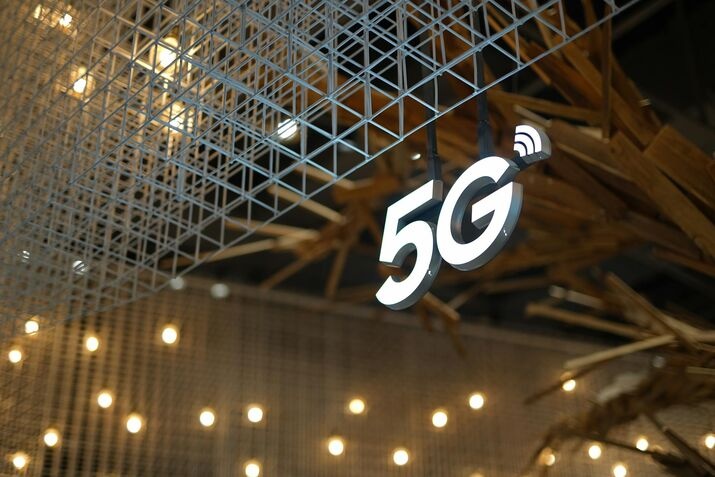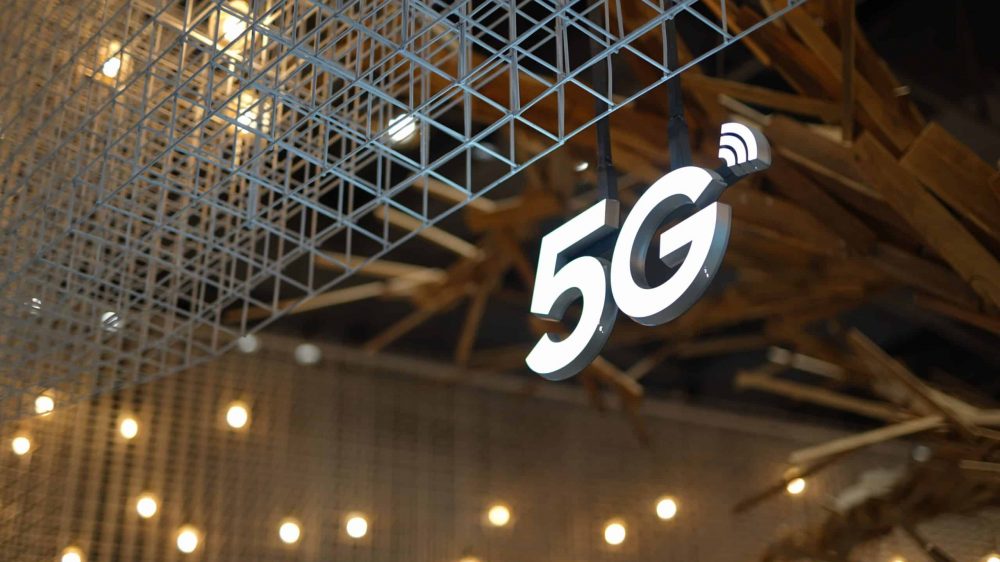
Does 5G live up to its expectations? And what about the potential downsides?
Understanding the pros and cons of 5G technology in several industries will help you better judge its impact, and if it is worth all the hype it has been getting.
5G is the buzzword everyone is talking about. This fifth-generation wireless technology guarantees lightning-fast speeds, ultra-low latency, and massive connectivity.
From manufacturing to entertainment and e-commerce, 5G has brought about different innovations and customer experiences.
What Is 5G Technology?
5G (fifth-generation mobile technology) is the newest type of cell phone network or technology. Compared to its predecessor, 4 G, it features faster speed, lower latency, and higher capacity.
It’s much faster, so you can download things quicker and watch videos without them stopping to load. It also responds faster when you’re playing games online. Plus, it can connect many devices simultaneously, which is vital for smart homes and self-driving cars.
It was first released in 2019 by mobile phone companies and is widely used today.
RELATED BLOG POSTS
- 5 PROVEN TIPS TO IMPROVE NEXT.JS SEO FRIENDLINESS – CHARISOL
- SIMPLIFY YOUR SITE WITH STATIC SITE GENERATORS AND TRANSFORM WEB DEVELOPMENT
- THE COMPLETE GUIDE TO ANGULAR UNIT TESTING IN APP DEVELOPMENT
- 7 GAME-CHANGING UPDATES FOR FRONTEND DEVELOPERS
How Does 5G Technology Work?
5G uses radio waves to send information, just like 4G, but it does it in a much more advanced way. Imagine radio waves as roads. 4G uses a few roads, while 5G uses many more, and these roads are wider. This allows much more “traffic” (data) to travel simultaneously, making everything faster.
One key difference is that 5G uses higher-frequency radio waves. These higher frequencies can carry much more information but don’t travel as far. To solve this, 5G uses many smaller cell towers placed closer together. Think of it like adding more exits along the highway, allowing data to reach its destination faster.
Another important technology is beamforming. Instead of sending the signal out in all directions, like a floodlight, 5G focuses the signal directly on your device, like a spotlight. This makes the connection much stronger and more efficient, ensuring you get the best possible signal.
Pros and Cons of 5G Technology on Various Industries
With the understanding of this technology and how it works, it is established that there are some pros and cons of 5G technology, including:
- faster speed
- shorter latency
- increased capability
- increased bandwidths
- reduced error rates
- smaller physical footprint, etc.
But how do all these directly affect in-demand industries in today’s world?
Here is a breakdown of the pros and cons of 5G technology in different industries, starting with the pros.
1. Healthcare Industry
The healthcare industry stands to benefit immensely from the implementation of 5G technology.
With its ability to handle massive amounts of data at incredibly high speeds, 5G enables real-time communication between healthcare professionals and patients, regardless of location.
This advancement leads to telemedicine, remote patient monitoring, and remote surgeries, making healthcare more accessible and efficient.
5G’s high-speed connectivity also facilitates the quick transfer of medical records and data-driven research and analysis.
2. Transportation and Logistics
With the advent of autonomous vehicles, 5G is crucial for ensuring seamless and reliable connectivity. It enables vehicles to communicate with each other and smart infrastructure.
Other pros of 5G technology in relation to transportation and logistics include:
- Smart traffic management: 5G can enable real-time traffic monitoring and management, optimizing traffic flow and reducing congestion.
- Improved logistics and supply chain management: Real-time tracking of goods and vehicles can improve efficiency and reduce logistics and supply chain costs.
3. Entertainment and Media
The entertainment and media industries are experiencing a significant transformation with the advent of 5G technology, specifically:
- Enhanced streaming and downloads: With its high-speed and low-latency capabilities, 5G offers significantly faster download and streaming speeds. This enables higher-quality video and audio streaming, including 4K and 8K video, and immersive virtual and augmented reality experiences.
- Cloud gaming: 5G’s low latency makes cloud gaming a more viable option, allowing users to stream high-quality games without needing expensive hardware.
Users can enjoy immersive gaming, ultra-high-definition video streaming, and interactive live events without buffering issues.
5G also facilitates the rapid downloading and sharing of large media files, making content creation and distribution more effective.
4. Manufacturing and Industrial Automation
5G technology facilitates the implementation of augmented reality (AR) and virtual reality (VR) technologies for training staff and carrying out quality control in various manufacturing companies.
Other ways 5G technology helps in the manufacturing and industrial automation industry include:
- Industrial IoT (IIoT): 5G enables the connection of numerous sensors and devices in manufacturing facilities, allowing for real-time monitoring of production processes, predictive maintenance, and improved efficiency.
- Robotics and Automation: 5G’s low latency allows for more precise control of robots and automated systems, improving manufacturing efficiency and productivity.
- Remote Control and Monitoring: 5G enables remote control and real-time monitoring of industrial equipment and machines, reducing the need for constant on-site personnel and improving safety.
These pros of 5G technology help to simplify processes, boost efficiency, and increase productivity in the manufacturing industry.
5. Retail and E-commerce
The retail industry is experiencing a significant shift with the integration of 5G technology.
Here are some pros of 5G technology in the retail and e-commerce industry:
- Enhanced shopping experiences: 5G enables augmented reality shopping experiences, allowing customers to try on clothes or visualize furniture in their homes virtually.
- Faster transactions and payments: 5G facilitates faster and more secure mobile payments, improving the checkout experience for customers.
- Personalized shopping experiences: 5G, combined with data analytics, enables personalized shopping experiences, tailoring product recommendations and promotions to individual customers.
- Enhanced media quality: High-quality product images and videos can be easily accessed, giving customers a realistic view of the products they intend to purchase.

Cons of 5G Technology
We can’t write a post on 5G technology and only talk about the pros.
While 5G technology has several advantages, it also has a few disadvantages worth considering.
Here are some cons of 5G technology:
1. Limited global coverage and cost intensiveness
The deployment of 5G infrastructure requires a significant investment in new infrastructure, including more cell towers and base stations.
Establishing widespread coverage in remote or rural areas may take longer. Due to its cost, telecommunication companies may find it challenging, resulting in higher subscription fees or slower rollouts in some regions.
2. Compatibility and device issues
Transitioning to 5G requires compatible devices capable of accessing the new networks. While smartphone manufacturers have started producing 5G-enabled devices, older devices may not be compatible, necessitating the purchase of new devices for those seeking to enjoy the benefits of 5G connectivity.
3. Reduced battery life
Based on feedback from some users, 5G technology rapidly reduces battery life. This means that, similar to device compatibility, manufacturers might need to invest in new battery technology to support using 5G across these devices.
4. Privacy and security risks
With 5G’s increased connectivity and data transfer capabilities, there is a potential for heightened privacy and security risks. The larger attack surface may present more opportunities for cyberattacks, and the sheer volume of data transmitted through 5G networks may pose challenges regarding data privacy and protection.
5. Signal blockage
5G uses high radio waves to send data super fast. These waves are like light that travel quickly but can be easily blocked.
The downside is that buildings or trees can easily block the 5G signal, meaning you might lose connection or have slower speeds if you’re not close enough to a tower or have too many obstacles.

Conclusion
The promise of faster speeds, lower latency, and increased capacity is truly exciting.
However, it’s essential to acknowledge the challenges associated with this new technology. To fully realize 5G’s potential, issues such as signal blockage, security concerns, and limited global coverage must be addressed.
A balanced look at the pros and cons of 5G technology has helped identify that its utilization has the potential to revolutionize various industries, transforming how we work, communicate, and experience the world around us.
From healthcare and transportation to entertainment and retail, 5G’s lightning-fast speeds, ultra-low latency, and massive connectivity empower industries to innovate and create new opportunities.
While some disadvantages exist, ongoing advancements and improvements in 5G technology will likely address many of these concerns.
As this technology continues to evolve and expand its coverage, you can expect even more significant advancements and a future in which 5G becomes an integral part of daily life.
Sign up for our newsletter to get regular updates and news on technology and innovation worldwide
READ MORE: THE FUTURE OF IOT: HOW EDGE COMPUTING IS LEADING THE CHARGE

